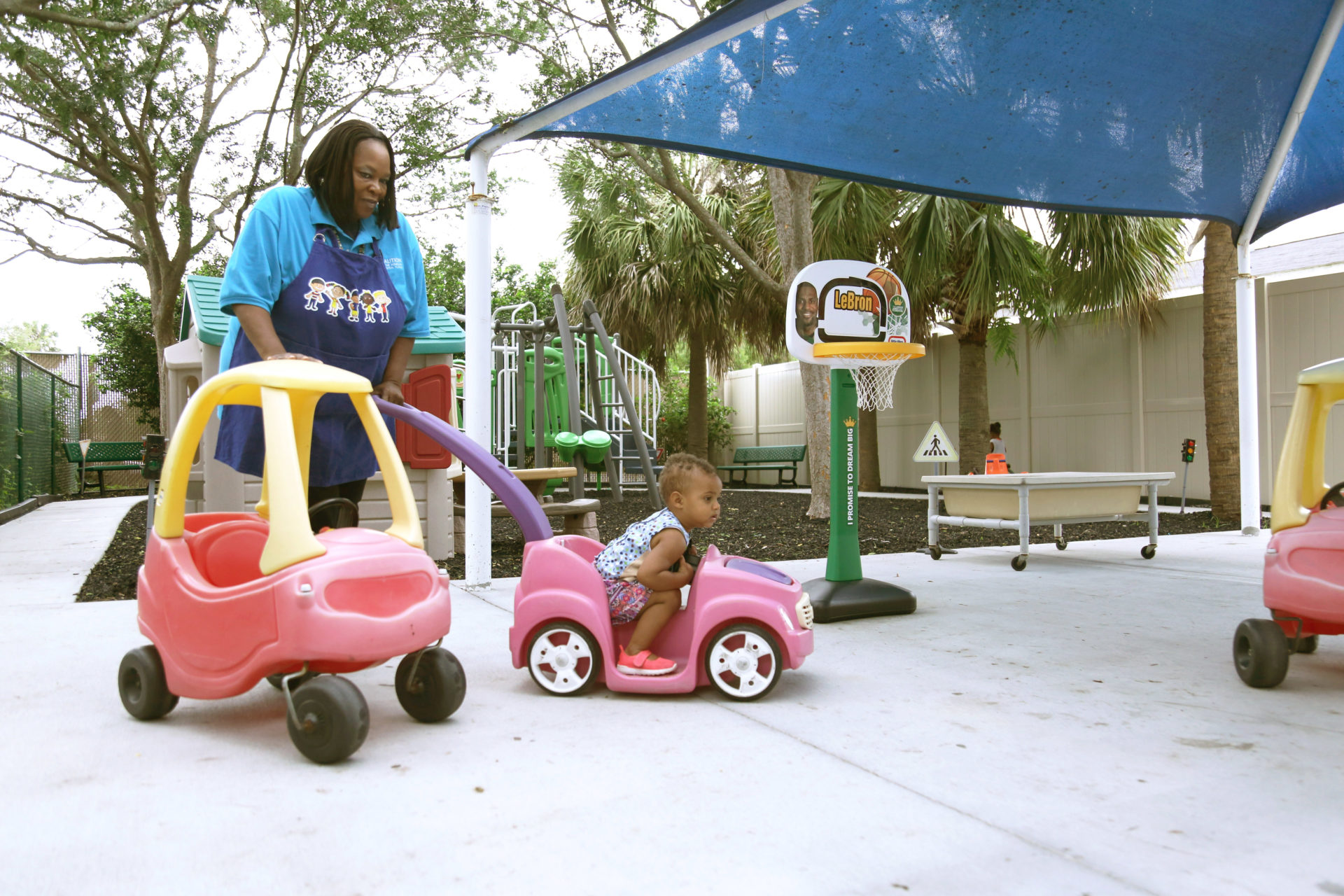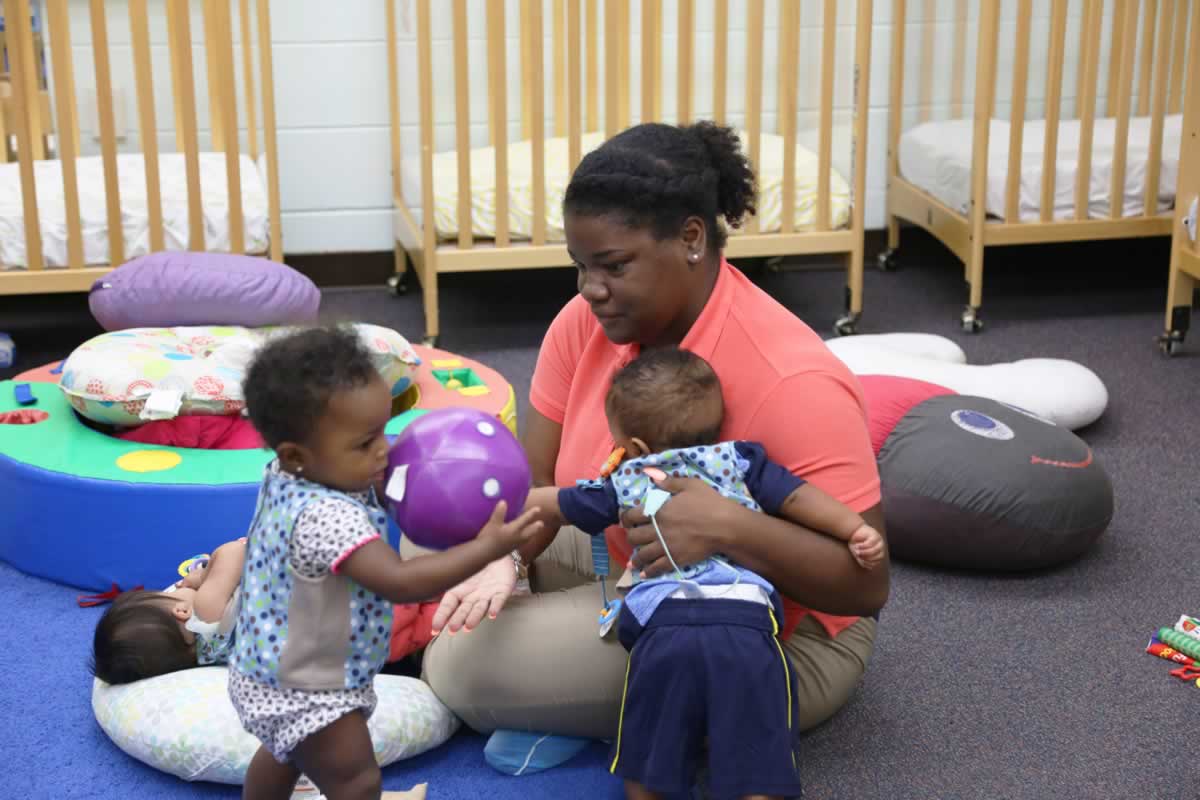Providing frequent quality interactions in early childhood classrooms is essential — for children’s brain development, for their socioemotional development, for their language development, and more.
Also essential: wearing a mask to protect unvaccinated children’s health during the COVID pandemic.
They’re both essential, but they’re also at odds.
Having conversational turns with infants, toddlers, and preschoolers isn’t always easy. Having conversational turns with children while wearing a mask is even harder. With intentionality, though, teachers can see to it that quality interactions continue to take place — and continue to provide their many benefits.
What does that intentionality look like? Here are some tips that may help early childhood teachers achieve quality interactions and conversational turns, even while wearing a mask:
- Proximity: Move close to the child, squat or sit at eye level, lean in. Place your hand lightly on their shoulder or back to cue that you are speaking.
- Eye contact: Look children in the eye when speaking to them. Maintaining eye contact with infants is especially crucial since they have limited vision and need to see facial expressions for understanding and to build relationships.
- Volume: Masks may have a slight muffling effect, so speak up but do not shout. Preserve your voice by speaking at a volume that is comfortable and a tone that is pleasant.
- Speed: Speak more slowly. Speaking slowly will help you conserve energy and will increase understanding.
- Enunciation: Say a word or parts of a word fully and distinctly. This helps children comprehend what we are saying as well as learn pronunciation.
- Accentuation: Avoid monotony by emphasizing key words and information, but don’t always accentuate in the same way. Use different intonations by raising or lowering your vocal pitch slightly.
- Pauses: Make a conscious effort to noticeably pause. Children need extra time to process and respond. This is especially important when wearing a mask. Visual cues of the mouth help us to see when a speaker is pausing for a response.
- Emotion: In appropriate moments, try to make your voice more expressive by conveying positive emotions like excitement, awe, gratitude, and sympathy.
- Facial expressions: Even if your mouth is covered you can use your eyebrows and eyes to express emotion. When you smile there’s a wrinkling that occurs at the outer edges of your eyes. This happens more naturally and noticeably for some people than others, so you may want to practice in front of a mirror. Another example: closing your eyes when agreeing and raising eyebrows when opposing to add additional emphasis.
- Gestures: Integrate simple gestures like a hand wave to signal “hello” and “goodbye.” A thumbs-up or air high five can offer encouragement and confirm understanding or agreement. To express uncertainty or lack of understanding, add a shoulder shrug or “huh” hand gesture. These forms of nonverbal communication reinforce the message you are conveying.
- Enthusiasm: Have fun, show excitement, laugh, sing, and be silly.
Ways to improve the indoor classroom environment
- Turn off unnecessary background noise, such as music or electronics, that can make quality interactions more difficult.
- Use picture schedules, first-then boards, picture steps, and other visual cues to help children understand the directions and ideas you are communicating.
- Use real photos of children expressing emotions, such as excited, frustrated, concerned, mad, or confused. Label and create cards that can be used to help children learn emotions and express them. Especially during mask wearing, these emotions may be harder to discern.
- Create quiet areas in the classroom by arranging furniture and adding area rugs.
- Add sound-dampening materials, such as fire-retardant curtains. Add felt boards, carpet squares, or cork boards to the back of shelves or walls. If rooms have high ceilings, find safe ways to hang banners or acoustic materials.
Take learning outside — Learning and interaction can happen anywhere
If mask-wearing is optional when you’re outside, it’s important to optimize that time.
- Conduct group time outside, possibly as a calming transition before going inside.
- Bring a blanket and set up a book corner for small group reading time.
- Sing songs that require response, ask for specific movements, or other directions.
- Play games like Mother May I and Simon Says that have children focus on your words and respond.
- Participate and engage children in small groups to extend learning and conversation. Art, dramatic play, sensory table, and building can all happen outside. Create outdoor learning areas by adding materials to further extend learning.
As LENA’s research team points out in its Inside Early Talk report, COVID-19 has reduced conversational turn rates in child care settings. Teachers are facing new challenges, taking on additional responsibilities, contending with job insecurity, and facing unprecedented levels of stress. I know they want to keep having quality interactions with the children in their care, and I hope the tips provided here help spark some ideas and inspiration for doing just that.








